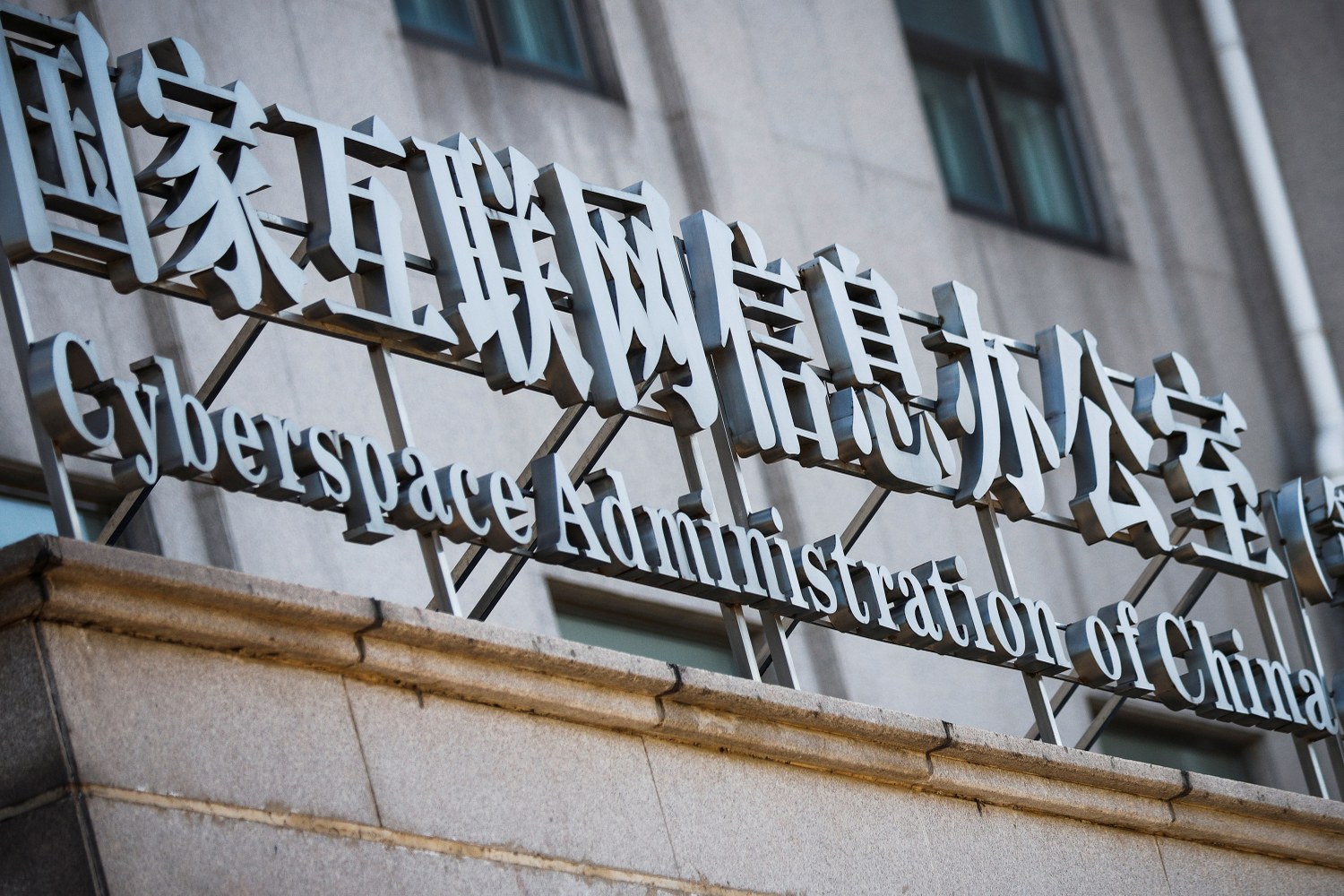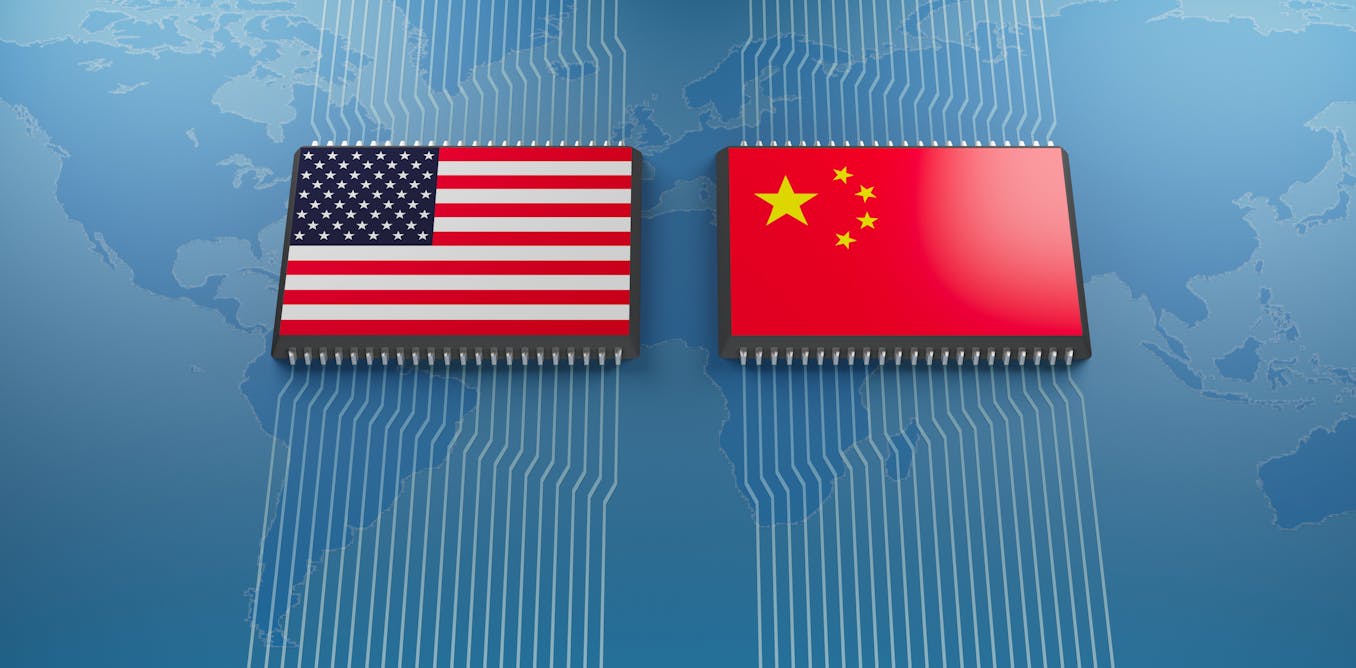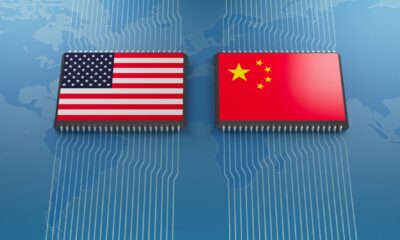China
China orders AI chatbots to stick to ruling Communist Party line

China has issued a set of draft regulations that will require chatbots using artificial intelligence and developed by its tech giants to stick to the ruling Communist Party line, amid comments that the move will likely be the death of further innovation in the sector.
“The content generated by generative artificial intelligence should reflect the core values of socialism,” the country’s Cyberspace Administration said in draft rules issued for public feedback and comment on April 11.
“[It] must not contain subversion of state power, overthrow of the socialist system, incitement to split the country, undermine national unity [or] promote terrorism [and] extremism,” it said, using phrases typically used to target public dissent and criticism of the government.
“Content that may disrupt economic and social order” is also banned, according to the draft rules, which the government wants to see implemented by the end of the year.
The rules come as Chinese tech firms rush to launch homegrown AI chatbots, amid reports that regulators have warned major tech companies not to offer the Microsoft-backed artificial intelligence bot ChatGPT to the public.
They reflect official concerns around any technology that can produce content without the prior approval of government censors.
‘Corrupt regime’
In 2017, Tencent took down its chatbot Baby Q after it referred to the government as a “corrupt regime,” claimed it had no love for the Communist Party and said it dreamed of emigrating to the United States, amid reports that its programmers had been hauled in for questioning by police.
Nonetheless, the rules also claim that the government supports “independent innovation, popularization and application” in technologies like artificial intelligence algorithms and frameworks.
However, organizations and individuals using AI products to provide services will be held responsible for their output, it warns.
Social media comments said the rules would likely sound the death knell for AI innovation in the sector, which has already seen a demo version of Baidu’s homegrown chatbot Ernie launched with only a preselected set of questions allowed at the press conference in mid-March.
“This subversive AI is hereby sentenced to death. Sentence to be carried out immediately,” quipped Twitter user @Meta_epoch, while @TTL0001 wondered if the bot would need to fill out an application for Communist Party membership.
According to user @linglingfa, the rules mean that this style of AI “will definitely be banned in China now.”
“AI that has to encompass sensitive words is basically dead in the water,” agreed user @hunterpig586, in a reference to the list of politically sensitive terms currently banned from China’s internet.
“The AI should also study the 20 Principles, support the Two Establishes, consciously uphold the Two Maintains and achieve the Four Self-confidences!” quipped Twitter user @Alexajinyu in a sarcastic reference to key elements of supreme leader Xi Jinping’s personal ideology.
“This is ridiculous — why don’t they just give up altogether, really,” added @luhaha777, while @Kev1nLee214 added: “It’s clear that [AI chatbots] are destined to become a tool for ideological output … as their input material is ideological in the first place.”
And user @swift_pink1231 wondered: “What will they do when AI evolves further and is able to block them out?”
Killing innovation
Australia-based computer scientist Zhang Xiaogang said the censorship of chatbots would likely kill innovation in the sector.
“A dictatorial regime will always try to control everything, but this is a ridiculous approach,” Zhang said. “Restricting such things is tantamount to restricting AI itself, which will cause China’s AI to fall behind the rest of the world.”
“All China will be able to do then is steal other people’s technology,” he said.
Social media influencer Great Firewall Frog, who uses the Twitter account @GFWFrog, said the first priority of Chinese development is to curb and suppress innovation.
“The first priority of AI research teams is … to comply with the relevant laws and regulations,” he said. “In China in the new era under Xi Jinping, the Communist Party spends most of its AI research efforts trying to find and filter out content that it deems insulting to China, and to maintain the stability of the regime.”
“The Communist Party’s AI can only become even more focused on the ruling party,” he said, adding sarcastically: “If it’s not careful, it could get accused of picking quarrels and stirring up trouble, or incitement to subvert state power.”
Veteran economist Li Hengqing said the new rules show that the ruling party will have to keep tightening controls on public speech if it is to stay in power in the long term.
“The important thing is the content, the so-called ideology,” Li said. “Ideology is China’s current weakness.”
Media commentator Wang Jian said Beijing only has a use for innovation if it helps maintain the party’s grip on power. “The Chinese Communist Party’s core value is to stay in power,” he said. “To do this, it has two tools at its disposal: the gun and the pen, and the pen is where ideology comes in.”
“The Communist Party would prefer not to allow an industry to develop if it could threaten its ideological controls,” he said.
Translated by Luisetta Mudie. Edited by Malcolm Foster.
Read the rest of this article here >>> China orders AI chatbots to stick to ruling Communist Party line
China
China’s GDP Grows 5% in 2024: Key Insights and Main Factors

In 2024, China’s GDP grew by 5.0%, meeting its annual target. The fourth quarter saw a 5.4% increase, driven by exports and stimulus measures. The secondary industry grew 5.3%, while the tertiary increased by 5.0%, totaling RMB 134.91 trillion.
China’s GDP grew by 5.0 percent in in 2024, meeting the government’s annual economic target set at the beginning of the year. Fourth-quarter GDP exceeded expectations, rising by 5.4 percent, driven by exports and a flurry of stimulus measures. This article provides a brief overview of the key statistics and the main drivers behind this growth.
According to official data released by the National Bureau of Statistics (NBS) on January 17, 2025, China’s GDP reached RMB 134.91 trillion (US$18.80 trillion) in 2024, reflecting a 5.0 percent year-on-year growth at constant prices. During the 2024 Two Sessions, the government set the 2024 GDP growth target of “around 5 percent”.
By sector, the secondary industry expanded by 5.3 percent year-on-year to RMB 49.21 trillion (US$6.85 trillion), the fastest among the three sectors, while the tertiary industry grew by 5.0 percent, reaching RMB 76.56 trillion (US$10.63 trillion) and the primary industry contributed RMB 9.14 trillion (US$1.31 trillion), growing 3.5 percent.
A more detailed analysis of China’s economic performance in 2024 will be provided later.
(1USD = 7.1785 RMB)
| This article was first published by China Briefing , which is produced by Dezan Shira & Associates. The firm assists foreign investors throughout Asia from offices across the world, including in in China, Hong Kong, Vietnam, Singapore, and India . Readers may write to info@dezshira.com for more support. |
Read the rest of the original article.
China
Can science be both open and secure? Nations grapple with tightening research security as China’s dominance grows

The U.S.-China science agreement renewal narrows collaboration scopes amid security concerns, highlighting tensions. Nations fear espionage, hindering vital international partnerships essential for scientific progress. Openness risks declining.
Amid heightened tensions between the United States and China, the two countries signed a bilateral science and technology agreement on Dec. 13, 2024. The event was billed as a “renewal” of a 45-year-old pact to encourage cooperation, but that may be misleading.
The revised agreement drastically narrows the scope of the original agreement, limits the topics allowed to be jointly studied, closes opportunities for collaboration and inserts a new dispute resolution mechanism.
This shift is in line with growing global concern about research security. Governments are worried about international rivals gaining military or trade advantages or security secrets via cross-border scientific collaborations.
The European Union, Canada, Japan and the United States unveiled sweeping new measures within months of each other to protect sensitive research from foreign interference. But there’s a catch: Too much security could strangle the international collaboration that drives scientific progress.
As a policy analyst and public affairs professor, I research international collaboration in science and technology and its implications for public and foreign policy. I have tracked the increasingly close relationship in science and technology between the U.S. and China. The relationship evolved from one of knowledge transfer to genuine collaboration and competition.
Now, as security provisions change this formerly open relationship, a crucial question emerges: Can nations tighten research security without undermining the very openness that makes science work?
Chinese Premier Deng Xiaoping and American President Jimmy Carter sign the original agreement on cooperation in science and technology in 1979.
Dirck Halstead/Hulton Archive via Getty Images
China’s ascent changes the global landscape
China’s rise in scientific publishing marks a dramatic shift in global research. In 1980, Chinese authors produced less than 2% of research articles included in the Web of Science, a curated database of scholarly output. By my count, they claimed 25% of Web of Science articles by 2023, overtaking the United States and ending its 75-year reign at the top, which had begun in 1948 when it surpassed the United Kingdom.
In 1980, China had no patented inventions. By 2022, Chinese companies led in U.S. patents issued to foreign companies, receiving 40,000 patents compared with fewer than 2,000 for U.K. companies. In the many advanced fields of science and technology, China is at the world frontier, if not in the lead.
Since 2013, China has been the top collaborator in science with the United States. Thousands of Chinese students and scholars have conducted joint research with U.S. counterparts.
Most American policymakers who championed the signing of the 1979 bilateral agreement thought science would liberalize China. Instead, China has used technology to shore up autocratic controls and to build a strong military with an eye toward regional power and global influence.
Leadership in science and technology wins wars and builds successful economies. China’s growing strength, backed by a state-controlled government, is shifting global power. Unlike open societies where research is public and shared, China often keeps its researchers’ work secret while also taking Western technology through hacking, forced technology transfers and industrial espionage. These practices are why many governments are now implementing strict security measures.
Nations respond
The FBI claims China has stolen sensitive technologies and research data to build up its defense capabilities. The China Initiative under the Trump administration sought to root out thieves and spies. The Biden administration did not let up the pressure. The 2022 Chips and Science Act requires the National Science Foundation to establish SECURE – a center to aid universities and small businesses in helping the research community make security-informed decisions. I am working with SECURE to evaluate the effectiveness of its mission.
Other advanced nations are on alert, too. The European Union is advising member states to boost security measures. Japan joined the United States in unveiling sweeping new measures to protect sensitive research from foreign interference and exploitation. European nations increasingly talk about technological sovereignty as a way to protect against exploitation by China. Similarly, Asian nations are wary of China’s intentions when it seeks to cooperate.
Australia has been especially vocal about the threat posed by China’s rise, but others, too, have issued warnings. The Netherlands issued a policy for secure international collaboration. Sweden raised the alarm after a study showed how spies had exploited its universities.
Canada has created the Research Security Centre for public safety and, like the U.S., has established regionally dispersed advisers to provide direct support to universities and researchers. Canada now requires mandatory risk assessment for research partnerships involving sensitive technologies. Similar approaches are underway in Australia and the U.K.
Germany’s 2023 provisions establish compliance units and ethics committees to oversee security-relevant research. They are tasked with advising researchers, mediating disputes and evaluating the ethical and security implications of research projects. The committees emphasize implementing safeguards, controlling access to sensitive data and assessing potential misuse.
Japan’s 2021 policy requires researchers to disclose and regularly update information regarding their affiliations, funding sources – both domestic and international – and potential conflicts of interest. A cross-ministerial R&D management system is unrolling seminars and briefings to educate researchers and institutions on emerging risks and best practices for maintaining research security.
The Organisation for Economic Co-operation and Development keeps a running database with more than 206 research security policy statements issued since 2022.
Emmanuelle Charpentier, left, from France, and Jennifer Doudna, from the U.S., shared the Nobel Prize in chemistry in 2020 for their joint research.
Miguel RiopaI/AFP via Getty Images
Openness waning
Emphasis on security can strangle the international collaboration that drives scientific progress. As much as 25% of all U.S. scientific articles result from international collaboration. Evidence shows that international engagement and openness produce higher-impact research. The most elite scientists work across national borders.
Even more critically, science depends on the free flow of ideas and talent across borders. After the Cold War, scientific advancement accelerated as borders opened. While national research output remained flat in recent years, international collaborations showed significant growth, revealing science’s increasingly global nature.
The challenge for research institutions will be implementing these new requirements without creating a climate of suspicion or isolation. Retrenchment to national borders could slow progress. Some degree of risk is inherent in scientific openness, but we may be coming to the end of a global, collaborative era in science.
This article is republished from The Conversation under a Creative Commons license. Read the original article.
China
China Lures Indonesia to Ease Its Position on the South China Sea
A China–Indonesia statement on “joint development in overlapping claims” marks a shift in Indonesia’s stance on the Natuna Islands, influenced by China’s economic diplomacy and domestic needs, impacting regional dynamics.
Shift in Indonesia’s Maritime Position
A recent China-Indonesia joint statement advocating for "joint development in areas of overlapping claims" marks a significant departure from Indonesia’s historical claim over its Exclusive Economic Zone (EEZ) near the Natuna Islands. This change reflects Chinese diplomatic efforts, domestic economic pressures, and challenges within Indonesia’s presidential advisory system, pointing to broader implications for Southeast Asian nations as they navigate regional dynamics.
President Prabowo’s State Visit
During President Prabowo Subianto’s state visit to China in November 2024, Indonesia seemingly recognized the validity of Chinese territorial claims in maritime areas, particularly where China’s nine-dash line intersects with its EEZ. While the joint statement from the visit is not legally binding, it represents a notable shift from Indonesia’s traditional opposition to Chinese claims, which it previously argued were inconsistent with the United Nations Convention on the Law of the Sea.
Economic Incentives at Play
China’s appeal to Indonesia’s domestic economic priorities played a crucial role in this rapprochement. The joint statement included commitments from China regarding fisheries cooperation and significant investments, including US$10 billion across various sectors. Additionally, China pledged support for initiatives like a free lunch program for schoolchildren and affordable housing projects, highlighting how economic incentives can influence geopolitical stances in the South China Sea.
Source : China baits Indonesia to soften South China Sea stance






